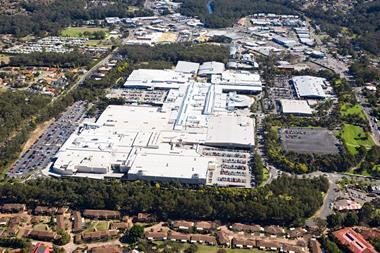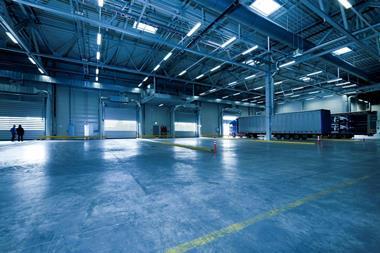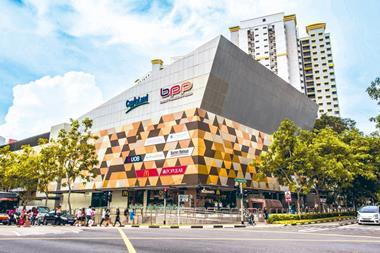After some years of being outshone by other Australian cities, Sydney is picking up again, driven by sound fundamentals. Rod Cornish reports
Around the world, the office sector has experienced an outstanding cycle, driven by a powering global economy, solid business conditions and the global share market.
In Singapore and Hong Kong, office rents have tripled since the trough in 2003-04, up 260%. In Australia, the performance has also been impressive, with rents climbing 170% in Brisbane, Queensland (since September 2003) and 140% in Perth, Western Australia (Dec 2003). Vacancy rates in these two cities are at record lows, below 1%.
Brisbane and Perth's outperformance reflects their state economies, which have been incredibly strong on the back of the resources boom. Further solid conditions are expected. The Victorian capital Melbourne has been through the strongest demand cycle on record.
However, it's been a different story in Sydney and the east coast of New South Wales. Up until the past 12 months, Australia's biggest city has been a laggard, delivering a rise in office rents of 22% since 2005. This is because office markets are synchronised and heavily reliant on the global economy, business conditions and global equity markets. While Australian business conditions have been strong, particularly in Western Australia and Queensland, the NSW economy has been soft. As a result, the state's weak housing market from early 2004 to late 2006 has reined in the Sydney office sector.
But there are signs of change. The NSW economy is bouncing back towards the Australian average with a significant pick-up in the past two quarters, leading to more buoyant leasing activity. Effective rents are rising as incentives fall; net absorption rates have been fairly strong and are starting to flow into rents; and vacancy rates are at their lowest level in five years and expected to fall further.
There are opportunities for the Sydney office market to be one of the strongest in Australia in the next few years. Supply will be a key factor. A full supply cycle in Sydney ranges from 10 to 20 buildings. In the mid-1990s, there were about 10 speculative office buildings; in the late 1980s, there was almost double the amount of supply.
At the moment, there are just a few cranes peppering the Sydney skyline, largely because of a lack of sites. This scarcity of prime sites in the Sydney CBD means the next development phase will require demolition of existing buildings with cash flow. This will push out the timing of the next major construction phase and add to the potential for rental growth.
A global slowdown could dampen the office party. But the effects might be muted in Australia, where business conditions were stronger during the recent August share market turmoil. A number of institutions globally are looking to Australia and the rest of the Asia-Pacific as a safer haven within the global context of a financial services slowdown because of the region's relationship with China.
Office is not the only sector to turn around in NSW. After peaking in late 2003, the east coast residential market has been in a downturn. Since late 2006, this market, particularly in Sydney, has entered a stabilisation phase. There has been a marked improvement in the inner-east, lower north shore and inner west areas, with overall price growth occurring for the first time since early 2004.
Net interstate and overseas migration is an important driver of demand for housing. The latter is currently the strongest in Australia in 17 years - and rising - with the highest skilled migrant intake ever seen due to government initiatives and the healthy employment market.
During 2003-04, NSW experienced a marked downturn in inward migration as people headed north to Queensland for affordability reasons. That trend has since reversed and NSW has recorded its strongest in-migration in five years, with total overseas and interstate migration above the long-tem average.
With fewer people leaving and more migrating to the state, underlying demand for housing is improving at a time when new residential construction is at 30-year lows. This has ensured demand is well in advance of supply, sparking a rise in auction clearance rates and rents in inner areas close to the city and harbour and some mid-ring suburbs. Affordability issues are hampering outer-ring suburbs which will remain weak for the next two to three years.
As witnessed in many places around Australia and the world, investors are returning to residential property after a three-year absence, enticed by improving yields.
A number of funds are also being created for Australian residential property, attracting interest from domestic and institutional superannuation investors. While there have been wholesale residential development funds for several years, this is the first time since the 1980s that we have seen these types of funds in Australia. These trusts haven't previously taken off because residential property yields in Australia are typically lower than in many other parts of the world largely because of a higher rate of owner-occupiers. But there has been a significant shift, with funds now looking at the total return perspective for the first time. Institutions are also looking at Sydney for stability as Australia's economy is expected to demonstrate stronger growth at a time of softness in the US and moderations in other global markets. Links with China should also reduce the impact on the Asia-Pacific region, including Australia, of any further lethargy in the US and other economies.
Rod Cornish is head of research, Macquarie Real Estate












